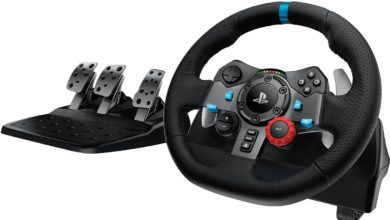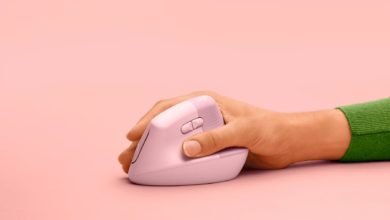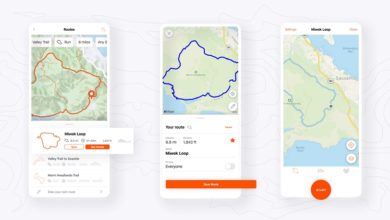Apple and Xiaomi light up 2015 wearable sales
The wearable numbers are out for the year final quarter of 2015 and as expected Apple and Xiaomi are pouncing on Fitbit. Even though Fitbit registered a healthy sales growth of 52.8%, they lost 14.4% of marketshare. Apple managed runner up position with 15% of marketshare and Xiaomi moved to #3 and almost ended up with 9.7% of share. Samsung and Garmin rounded off the top 5 positions. The industry registered healthy 171.6% increase in share, thanks to 78.1 unit shipments.
| Top Five Wearables Vendors, Shipments, Market Share and Year-Over-Year Growth, Q4 2015 (Units in Millions) | |||||
| Vendor | 4Q15 Unit Shipments | 4Q15 Market Share | 4Q14 Unit Shipments | 4Q14 Market Share | Year-Over-Year Growth |
| 1. Fitbit | 8.1 | 29.5% | 5.3 | 43.9% | 52.8% |
| 2. Apple | 4.1 | 15.0% | 0.0 | 0.0% | NA! |
| 3. Xiaomi | 2.7 | 9.7% | 0.7 | 6.2% | 258.5% |
| 4. Samsung | 1.3 | 4.9% | 0.8 | 6.7% | 65.0% |
| 5. Garmin | 1.0 | 3.5% | 0.6 | 5.3% | 48.2% |
| Others | 10.3 | 37.4% | 4.6 | 38.0% | 123.7% |
| Total | 27.4 | 100.0% | 12.1 | 100.0% | 126.9% |
| Source: IDC Worldwide Quarterly Wearable Device Tracker, February 23, 2016 | |||||
When 2015 sales were concerned, Fitbit managed to stay atop, with 26.9% of marketshare (down by 9 percent). Xiaomi’s market share jumped from 4% to 15.4% and Apple debuted in third spot with 14.9% of market share. It wouldn’t take much time for Apple to take the second position from Xiaomi as Apple has been selling the Apple Watch very well. Garmin took the fourth spot and Samsung rounded up the top 5. We may see Samsung scale up this year as the sales of Gear S2 (Tizen based and with innovative bezel that is rotated for UI interaction) is very good.
“Triple-digit growth highlights growing interest in the wearables market from both end-users and vendors,” noted Ramon Llamas, Research Manager for IDC’s Wearables team. “It shows that wearables are not just for the technophiles and early adopters; wearables can exist and are welcome in the mass market. And since wearables have yet to fully penetrate the mass market, there is still plenty of room for growth in multiple vectors: new vendors, form factors, applications, and use cases. This will help propel the market further.
“What is warranted is continued innovation and development,” added Llamas. “The market can only get so far with ‘me too’ and ‘copycat’ wearable devices. End-users expect improvement from what they have now, and new applications to spur replacement and increased adoption. Historical data, like steps taken and calories burned, has been a very good start. Prescriptive data, like what else a user can do to live a healthier life, coupled with popular applications like social media, news, and navigation, will push wearables further, and attract more users.”
“Fashion and design will play an equally important role in increasing adoption,” said Jitesh Ubrani, Senior Research Analyst for IDC Mobile Device Trackers. “Simply encrusting your watch with gold and jewels is not going to cut it. Rather forming partnerships with notable fashion icons, a route taken by Fitbit and Apple, is far more likely to succeed.
“It’s also worth noting that the wearables market isn’t just about smartwatches and fitness bands,” continued Ubrani. “Though the top 5 certainly dominate with wrist-worn devices, there’s been an immense amount of growth in other form factors like clothing, footwear, and eyewear – form factors that arguably require even more fashion sense than watches or bands.”
2016 is going to be a crucial year as more and more buyers are moving towards smart watches that can also track workouts etc. Not everyone would want to switch between smart band (like Fitbit, Mi Band) and a smart watch few times a day. This is where Apple’s advantage is. The Health Kit is really picking up steam and the applications for the Apple Watch are increasing at a very good rate. It is going to be a challenge for Xiaomi given that they have an extremely limited models (older model selling in few countries and newer variant selling only in China). It will be really interesting to see how Fitbit will scale up and defend the top position in this war of watches.
| Top Five Wearables Vendors, Shipments, Market Share and Year-Over-Year Growth, 2015 (Units in Millions) | |||||
| Vendor | 2015 Unit Shipments | 2015 Market Share | 2014 Unit Shipments | 2014 Market Share | Year-Over-Year Growth |
| 1. Fitbit | 21.0 | 26.9% | 10.9 | 37.9% | 93.2% |
| 2. Xiaomi | 12.0 | 15.4% | 1.1 | 4.0% | 951.8% |
| 3. Apple | 11.6 | 14.9% | 0.0 | 0.0% | NA |
| 4. Garmin | 3.3 | 4.2% | 2.0 | 7.1% | 60.9% |
| 5. Samsung | 3.1 | 4.0% | 2.7 | 9.2% | 18.5% |
| Others | 27.0 | 34.5% | 12.0 | 41.9% | 124.0% |
| Total | 78.1 | 100.0% | 28.8 | 100.0% | 171.6% |
| Source: IDC Worldwide Quarterly Wearable Device Tracker, February 23, 2016 | |||||



